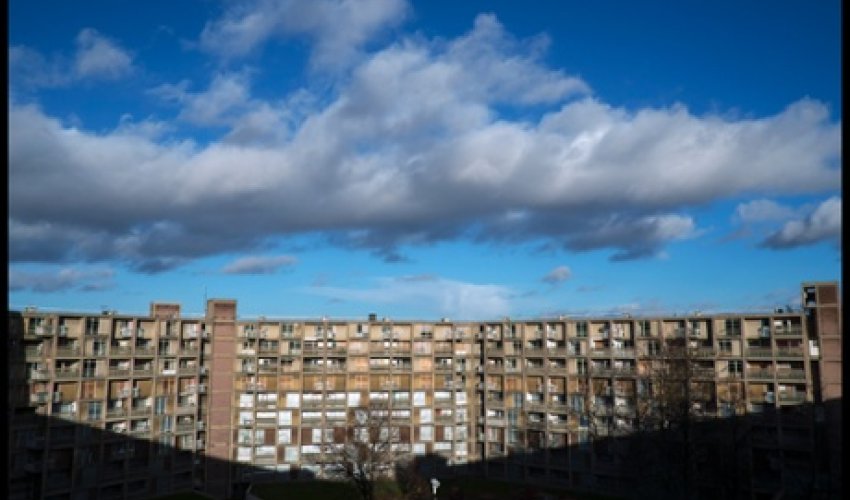The utopian estate that's been left to die - PHOTO

Park Hill is one of those places that a photographer, fascinated by architecture, social history and dereliction, simply has to visit. I have done, twice so far, driving up from Nottingham, hoping that the wonderful light would still be there by the time I arrived. Parking, and oddly just about the only car there, I was struck not only by its imposing nature, but also the tangible atmosphere of the place. The un-regenerated part is mostly empty now, with only about a dozen flats still occupied. The rest are boarded up, vacant. But the regeneration company ‘Urban Splash’ are making bright new flats and commercial spaces for Sheffield residents.Walking through the open spaces, there was an touching sense of the vision of the original architects, and how the gulf between their idealism, and the reality, would come back to haunt the place. Football goals, climbing frames, benches arranged for social interaction all showed a positive agenda. The security cameras on very tall poles were a more intrusive element.A stretch of graffiti reads “Clare Middleton I Love You Will U Marry Me”. It was done by a man called Jason in April 2001. The neon (and the editing) was added later by Urban Splash, the company restoring the flats. Sadly, the couple never did marry, and Ms Middleton died in March 2007.Park Hill was the first post-second world war redevelopment scheme in Sheffield, built on a site consisting of the existing ‘back-to-back’ housing, tenement buildings, waste ground and a maze of alleyways. In the 1930s it was known by local people as ‘Little Chicago’ because of the levels of violent crime there. As there was no real sewerage system, there were typhus and cholera outbreaks; having only one standpipe per hundred people didn’t help either. In the 19th century, the Park area housed the worst slums in Sheffield.Clearance started in the 1930s, paused for the second world war, but resumed shortly afterwards, when the young Sheffield city council architects Ivor Smith and Jack Lynn began work in 1945, designing a radical scheme to rehouse the local community. Park Hill was the first successful post-second world war slum clearance scheme of an entire community in Britain.In 1957 the construction started, and when it was completed in 1961 it was hailed as the most ambitious inner-city development of its time. Inspired partly by Le Corbusier, the ‘deck access scheme’ was seen as revolutionary. Its style was known as brutalism, and the concept described as ‘streets in the sky’, where milk floats would trundle along broad decks, stopping at front doors, as if they were in a normal street.On 16 June 1961, Park Hill was officially opened by Hugh Gaitskell, the leader of the Opposition. So began the saga of Park Hill, where families were re-homed next to their neighbours to maintain a strong sense of community, and old street names were re-used. Park Hill was designed so that the roof line stays level, even though it’s sited on a steep slope. At the site’s lowest point the flats are 13 storeys high, and at the highest point just 4 storeys. Twelve caretakers lived on site, on 24-hour call, ready to tackle any jobs that needed doing.(theguardian.com)ANN.Az




































 Photo
Photo 



 Video
Video 

